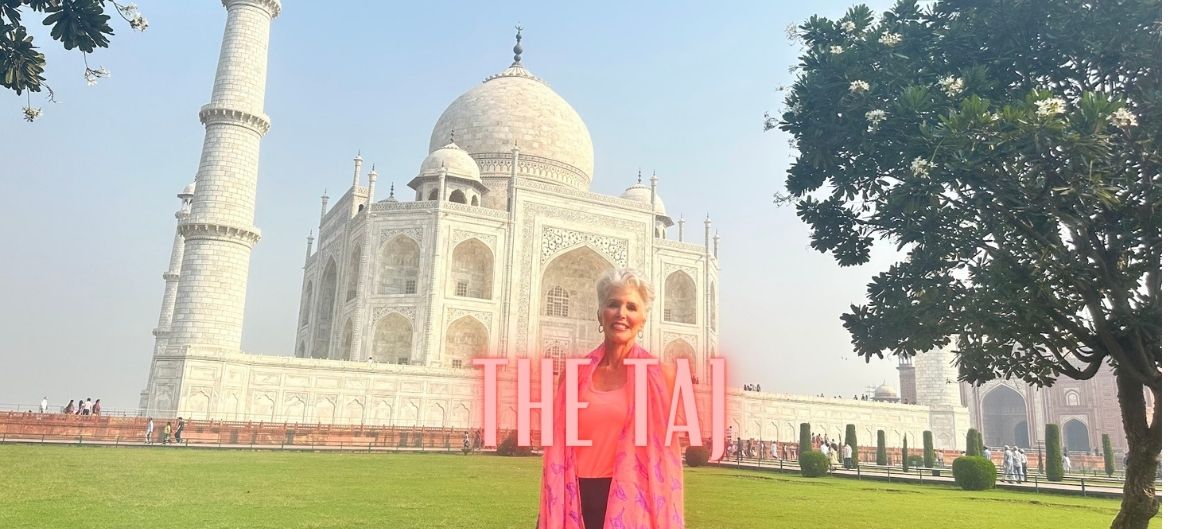Baby Taj, Big Taj and Black Taj: India’s Extravagance

Agra, India. Two wonders referred to as “Taj” exist today, the third remains the unfulfilled dream of a visionary Shah in mourning. All define the essence of India.
The first of these architectural marvels is actually titled Itimad-Ud-Daulah’s Tomb, known lyrically as “the jewel box in marble” and “Baby Taj.” This is the garden tomb of Mirza Guyas Beg, Grand Vizier of the Mughal Court, built in 1622 by his daughter, one of Shah Jahan’s wives. It would be this Shah who would later build “Big Taj.”

Building the Jewel Box
The luminous Makrana white marble which would soon define the Taj Mahal, or “The Big Taj” to locals, was first used here, replacing the red sandstone. Intricate, beautifully detailed inlays and mosaics decorate the interior. But it’s best known for its jewel-like painted and gilded ceiling patterns.





And just as with the actual Taj Mahal, its all about lighting; the position of the sun and the season, the time of day, cloud cover…all profoundly affect interior and exterior vibrance.


The Magnificence of “Big Taj”
Described as “a vision,” “a dream,” “a poem,” “a wonder,”…the Taj Mahal is all these at once. The sublime tomb marks an epic, transcendent love story, built to honor Mumtaz Mahal, fourth wife of Mughal Emperor Shah Jahan who died giving birth to his fourteenth child. Twenty-two years to build at a cost today of about $750 million, it established an unmatched architectural standard of perfection.


It exceeded my every expectation.

Taking 20,000 laborers to build, it was finished in 1648. Inside the mausoleum, the octagonal center chamber houses Mumtaz Mahal’s cenotaph on a raised platform. The Shah’s is next to his wife, destroying the perfect symmetry he had insisted upon for every conceivable aspect of its construction.

From the precise location at the bend of the Yumana river, the sem-precious and precious ornate floral stone inlays, filigreed screens, exquisitely carved floral reliefs, calligraphy, and carved incision painting to the reflection pools and exterior gardens.

His plan was to be buried in a twin structure, made of black onyx and located across the river, joined by a bridge to his wife’s tomb. The foundations are still partially visible. This would have been “The Black Taj” and it still lives vividly in the myths of the city of Agra.

An internal coup and mutiny among his four sons thwarted this plan and the Shah spent the last seven years of his life under house arrest in a nearby fort, accompanied by two of his surviving daughters. The Black Taj was never built and upon his death, the Shah was buried beside his wife. His only comfort during his final years was a distant view of his beloved’s memorial.


Unfortunately tourists are strictly forbidden from taking interior photos of the Taj Mahal you can browse Getty images to view licensed images. They don’t come close to the actual beauty.
Related Posts
Tashkent: A Vibrant Clash of Exotic Culture and Commerce!
The term “Silk Road” evokes images of camel caravans crossing deserts, laden with silk, spices, …
June 5, 2025Rio de Janeiro and the Girl from Ipanema: Where Music Meets the Sea
Rio de Janeiro is more than a city—it’s sun-soaked poetry. From the iconic Christ the …
May 3, 2025

Leave A Comment